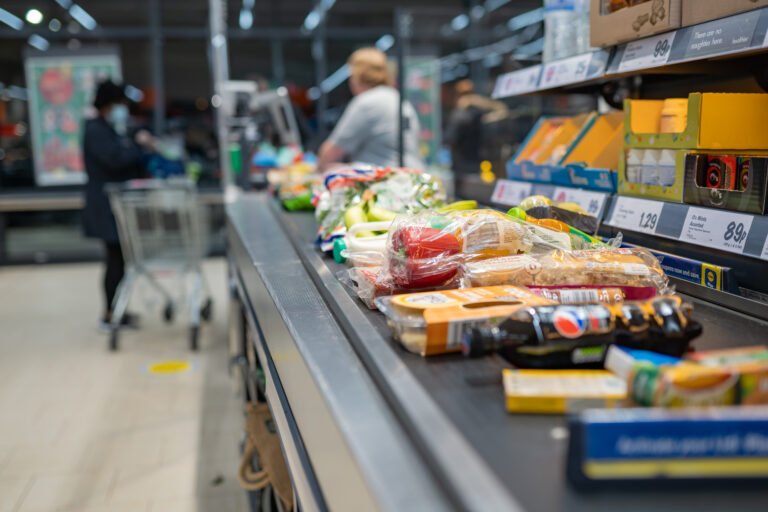For modern retailers, a robust food and drink procurement strategy is not just an operational task—it’s a critical driver of profitability and customer satisfaction. Retailers who master procurement enjoy cost efficiency, reliable supply chains, and the ability to consistently offer high-quality products. Whether running a small specialty store or a large supermarket chain, strategic procurement provides the foundation for sustainable growth.
Understanding Procurement in the Retail Context
Procurement involves sourcing products, negotiating with suppliers, and managing the supply chain to ensure the right items reach your store at the right time and price. In the food and drink industry, procurement is especially complex due to perishable goods, fluctuating market prices, and varying consumer demands. A thoughtful strategy helps retailers minimize risks, optimize costs, and maintain product availability.
Key Elements of an Effective Procurement Strategy
1. Supplier Selection and Management
Choosing the right suppliers is the backbone of procurement. Retailers must prioritize suppliers who offer:
- Competitive pricing
- Consistent quality
- Flexible delivery options
Building strong relationships with suppliers ensures reliability, fosters trust, and may lead to exclusive deals or priority service.
2. Cost Optimization
Effective procurement is about more than just finding the lowest price. Retailers should analyze total costs, including shipping, storage, and handling fees. Bulk purchasing, strategic timing, and negotiating volume discounts can significantly reduce costs while maintaining quality.
3. Quality Assurance
Ensuring the quality of food and drink products is critical for customer satisfaction and brand reputation. Retailers should work with suppliers that adhere to strict quality standards, safety regulations, and proper storage practices. Regular audits and sampling can help maintain consistent quality.
4. Inventory Management
Proper inventory management prevents overstocking, spoilage, and stockouts. Using inventory tracking systems, retailers can monitor demand patterns, predict peak seasons, and adjust procurement schedules accordingly. This reduces waste and ensures that popular products are always available.
5. Sustainability Considerations
Modern consumers value sustainability. Retailers should incorporate eco-friendly practices, such as sourcing from responsible suppliers, reducing packaging waste, and prioritizing local products. Sustainability not only attracts conscious consumers but also strengthens brand loyalty.
Procurement Process: Step by Step
Step 1: Market Analysis
Understand consumer trends, seasonal demands, and price fluctuations. A clear picture of the market enables smarter purchasing decisions and strategic supplier selection.
Step 2: Supplier Evaluation
Evaluate potential suppliers based on pricing, quality, delivery reliability, and flexibility. Request samples and assess their responsiveness and communication.
Step 3: Negotiation
Negotiate favorable terms, including pricing, payment schedules, and delivery frequency. Strong negotiation ensures cost efficiency and operational flexibility.
Step 4: Ordering and Delivery Management
Use structured ordering systems to ensure timely delivery and accurate stock levels. Monitor shipments closely to prevent delays and discrepancies.
Step 5: Performance Monitoring
Regularly assess supplier performance, product quality, and procurement efficiency. This allows retailers to adjust strategies and maintain high operational standards.
Leveraging Technology in Procurement
Modern retailers can greatly benefit from digital procurement tools. Platforms that integrate ordering, inventory tracking, supplier communication, and analytics improve accuracy, reduce manual errors, and provide actionable insights for strategic decision-making.
Mitigating Risks in Procurement
Retailers face risks such as supply chain disruptions, price volatility, and product spoilage. Diversifying suppliers, maintaining safety stock, and forecasting demand accurately are effective ways to mitigate these risks.
The Competitive Advantage of Strategic Procurement
A well-executed procurement strategy gives retailers a significant competitive edge. Cost savings, consistent product quality, and responsive supply chains enable better pricing, increased customer satisfaction, and faster adaptation to market trends. Strategic procurement transforms operations from reactive to proactive management.
Conclusion: Procurement as a Growth Driver
Food and drink procurement is far more than a transactional process—it is a strategic function that drives efficiency, profitability, and customer satisfaction. By focusing on supplier relationships, cost optimization, quality assurance, inventory management, and sustainability, modern retailers can build resilient operations ready for growth in an evolving market.
Transform your sourcing strategy with thokmandee’s Wholesale Marketplace—your trusted hub for efficient food and drink procurement!
FAQs
- Why is a procurement strategy important for retailers?
A strategy ensures cost efficiency, reliable supply, product quality, and operational consistency, all of which drive profitability and customer satisfaction. - How can retailers optimize procurement costs?
Through bulk purchasing, volume discounts, supplier negotiation, and minimizing hidden fees such as shipping and storage costs. - What role does supplier management play?
Strong supplier relationships ensure timely deliveries, consistent quality, flexible terms, and potential access to exclusive deals. - How can technology improve procurement?
Digital platforms streamline ordering, track inventory, monitor supplier performance, and provide data-driven insights for better decision-making. - How can retailers incorporate sustainability in procurement?
By sourcing responsibly, reducing packaging waste, prioritizing local products, and partnering with eco-conscious suppliers.







